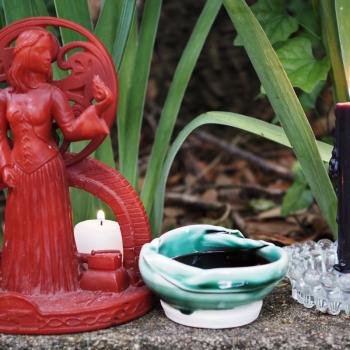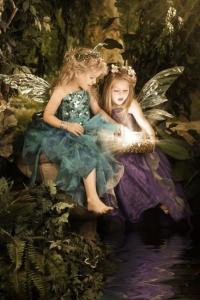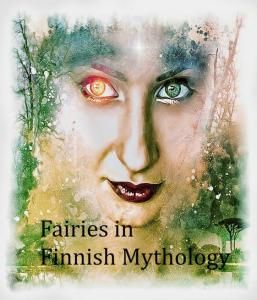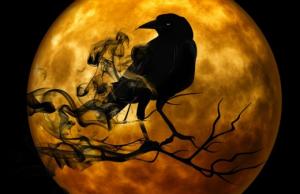
The Devil
In Latvian myths, fairy tales and folklore, devil is not an evil character. He is easily fooled by Dievs (God) and by people. He is physically strong but he is lazy. The realm of the devil was not like Christian Hell. It was more similar to our world. Entrances to his kingdom were in forests rivers, graveyards, swamps, caves, under the rocks and in the sea. It was believed that the devil kidnapped people and took them to his world the same way as some unfortunate souls of the dead who came back to claim a life of a person they knew in their lifetime. When the Christian devil was introduced to Latvians, his image emerged from several deities that under the new order were announced all to be ”the devil” and evil beings.
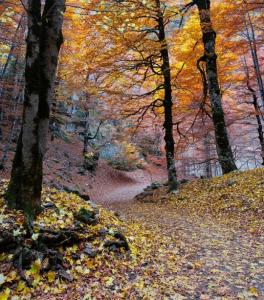
Visits From The Death
Passed away people were buried with items they could trade in the afterlife so that their livelihood was secured. The dead were called Veļi and it was believed that they visited their old homes from Mikeli (Day of St.Michael September 29th) to Martini (Day of St.Martin) on November 10th. Souls were invited to the feast. The Master of the house would call the passed-away relatives by their names. All the dead who had once lived in the house and who the living could remember. If it had been a troublesome year, he would scold them for not taking good care of the house and ask them to do better next year. After the feast, souls were chased out and the house was carefully cleaned. The dead were invited to clean themselves in the bathhouse. Similar customs can be found in ancient Finland and Estonia where during Kekri and Mardipäev celebrations families prepared sauna for the souls.
Food was left for the souls in the bathhouses, cemeteries, granaries and barns. Candles were left to burn so that the dead could see the food. In some areas bowls of water and clean towels were left so that the dead could clean themselves. It was said that those who did not honour the dead would have a poor harvest.
In modern-day Latvia, Remembrance days at the end of November and in the late summer are dedicated to remembering the ancestors.
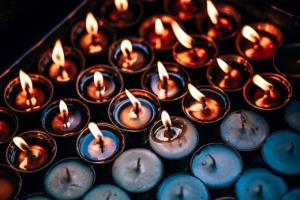
Werewolves
Werewolves are common figures in the folklore of all Baltic countries. In Latvia person who could turn into a wolf was called vilkači, vilkati. The person became a werewolf in a ritual. They would take off their clothes and they were not able to return to their human form until someone would touch their clothes. Stories of werewolves were common in agrarian societies where people kept livestock and tried to protect it from animals such as wolves. It was believed that werewolves were like actual wolves and stole meat. Some folk stories that belong to the oldest layer of werewolf myths tell that werewolves were dogs of god(s) and fought against evil sorcerers who tried to steal flowers of grains. Therefore werewolves were bringers of good harvests. Another opposite tale tells that werewolves were hounds of hell created by the Christian devil. This myth is later origin.
Dragons
Pūķis the dragon was believed to be a sorcerer’s familiar. They would steal grain and other riches and bring them to their owner. If Pūķis felt that they were not appreciated enough they would burn the house down. Pūķis demanded respect and in each meal, Pūķis was fed first. In Latvia and Lithuania belief in dragons was inspired by fiery meteorites.

Ghosts
Vadātājs was a spirit of a prematurely deceased person. It was a ghost who killed people similar manner to their own death. Vadātājs was equivalent to the devil of folklore. The devil who attacked travellers made their minds dizzy and confused so that they were unable to find their way home. Many times they lured people to follow them to the nearest body of water where they eventually drowned them.
Belief in the evil spirits and witches in Latvia did not begin until the witch hunts in Europe between 16th and 17th centuries. Magicians called burvji and wizards called burnieki and raganas (witches) were told to be working with the devil when in reality they were practitioners of folk medicine.
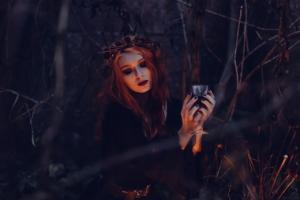
Fairies
In some areas, Laumas the fairies were also believed to be witches and working for the devil. With help of the devil, they could turn themselves into various beings and lure humans. It was possible that spirits of the dead could serve the devil and become sorcerers. Sometimes demons were considered to be independent spirits flying around and causing harm. If a sorcerer passed away and left their body. Their body was burned and this would stop them from returning to their body as a demon.
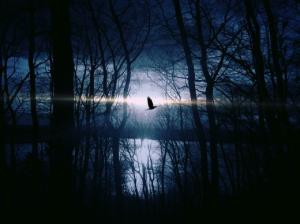
Lietuvens
Lietuvens was a ghost child who was doomed to wander the earth around the time they had died. They tortured people, cattle and horses during the night. Lietuvens is sometimes connected to sleep paralysis being a spirit that causes nightmares.





